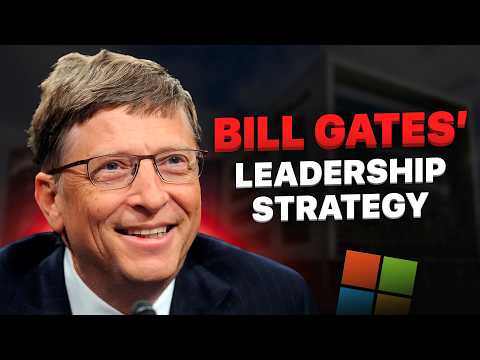
title

Bill Gates: From Code to Cure – A Compelling Blog Post
Introduction
The rhythmic clatter of a keyboard pierces the night’s silence. A young man in glasses, eyes red from burning ambition and lack of sleep, sits hunched over a desk littered with printouts. This is Bill Gates, and he’s just written a program that will forever transform the world of computers. This is the story of a man who turned his obsession with code into a trillion-dollar empire, a name synonymous with innovation and success in the tech world.
From Prodigy to Rebel
Born in Seattle in 1955, Bill Gates was a child of privilege. His father, a successful lawyer, instilled a thirst for knowledge, while his domineering mother instilled discipline, even forcing him to eat vegetables he hated. Bill’s brilliance was evident early on, with exceptional memory and top grades, particularly in math. At 13, he bypassed grades and entered the prestigious Lakeside School, where he encountered his first computer.
This was a defining moment. Bill, captivated by its potential, spent countless hours mastering programming. His first feat? A Tic-Tac-Toe game. He quickly surpassed the school’s curriculum and sought practical applications for his skills. It was at Lakeside that he met Paul Allen, a kindred spirit who shared his passion for coding. Despite their age difference, their partnership proved formidable.
Early Success and Controversies
Together, Gates and Allen tackled their first project – automating the school’s class schedule. It wasn’t just about efficiency; they ensured Bill landed in classes with the “most interesting girls.” This experience highlighted the real-world possibilities of programming.
At 15, they stumbled upon an opportunity – creating a traffic management system for Seattle. Their success earned them $20,000, a life-changing sum for teenagers. However, their rebellious streak surfaced when they were caught hacking into a computer system. Punishment came in the form of a ban from using school computers, but Gates wouldn’t back down. He negotiated access in exchange for finding vulnerabilities in their security system. This experience proved invaluable, offering Gates a taste of real-world systems.
Harvard and the Birth of Microsoft
Harvard beckoned, but Bill’s heart belonged to computers. He spent most of his time in the computer lab, even co-authoring a solution to the “pancake sorting problem,” a testament to his exceptional algorithmic skills. It was during his time at Harvard that the personal computer revolution began, and Gates, with Allen by his side, saw their chance.
They approached MITS, the manufacturer of the Altair 8800, and offered to write a BASIC interpreter. Despite their young age, they secured the deal by showcasing their skills and convincing MITS of the urgency for software tools. With no access to an Altair computer, they worked tirelessly for eight weeks, writing the program from scratch. It worked flawlessly upon first demonstration, marking the birth of Microsoft (originally hyphenated).
Dominating the Market and a Turning Point
Microsoft’s early years were rough, with operations based out of a motel room in Albuquerque. They worked relentlessly, fueled by a desire to outpace competitors. Gates wasn’t shy about criticizing his employees’ code, demanding excellence. In 1976, a bold decision – Gates dropped out of Harvard to devote himself entirely to Microsoft.
The turning point arrived in 1980 when IBM approached Microsoft to develop an operating system for their new personal computer. While Microsoft didn’t have a ready-made OS, they knew someone who did – Seattle Computer Products. Microsoft purchased their QDOS system for a mere $50,000, refined it, and sold it to IBM as PC-DOS (Personal Computer Disk Operating System).
Crucially, Gates insisted on non-exclusive licensing, allowing Microsoft to sell its OS (now MS-DOS) to other computer manufacturers. This strategic move laid the foundation for Microsoft’s future dominance in the operating system market.
The Rise of Windows and Philanthropy
By the 1990s, after significant improvements, Windows had become the world’s leading operating system. In 1986, Microsoft’s initial public offering (IPO) made Gates an instant millionaire at just 31 years old. Windows and Microsoft Office created a software giant, and Gates, the richest man in the world.
However, success often attracts scrutiny. The U.S. Department of Justice filed an antitrust lawsuit against Microsoft in 1998, accusing them of unfair competition. The trial, with Gates’ behavior under public scrutiny, damaged Microsoft’s reputation. Ultimately, the company faced restrictions on its activities, promoting competition within the industry.
Undeterred, Gates moved Microsoft forward and focused his growing wealth on philanthropy. In 2000, he and his wife Melinda







 Bengali
Bengali Chinese (Simplified)
Chinese (Simplified) English
English Hindi
Hindi Indonesian
Indonesian Irish
Irish Spanish
Spanish Swedish
Swedish Turkish
Turkish